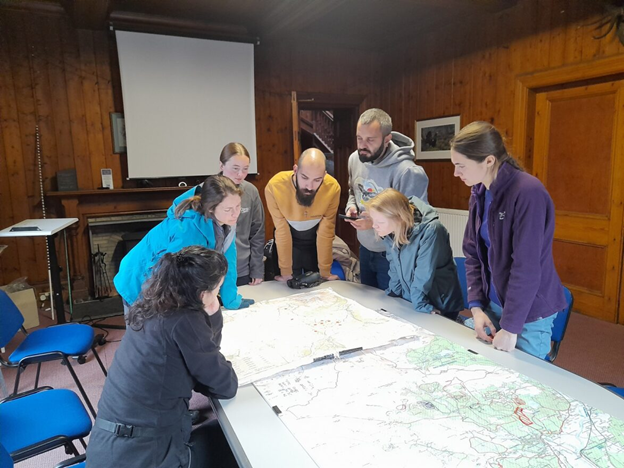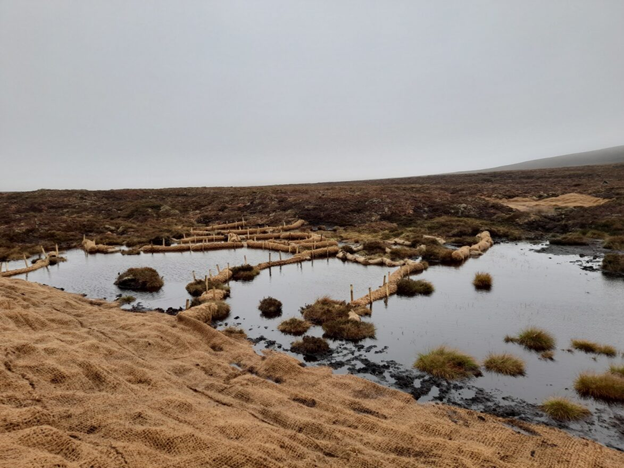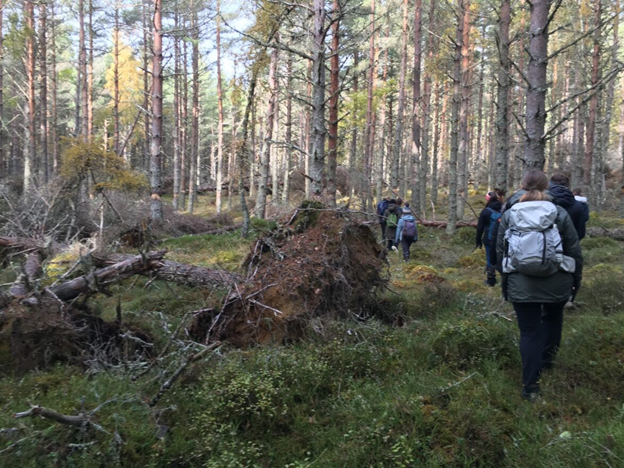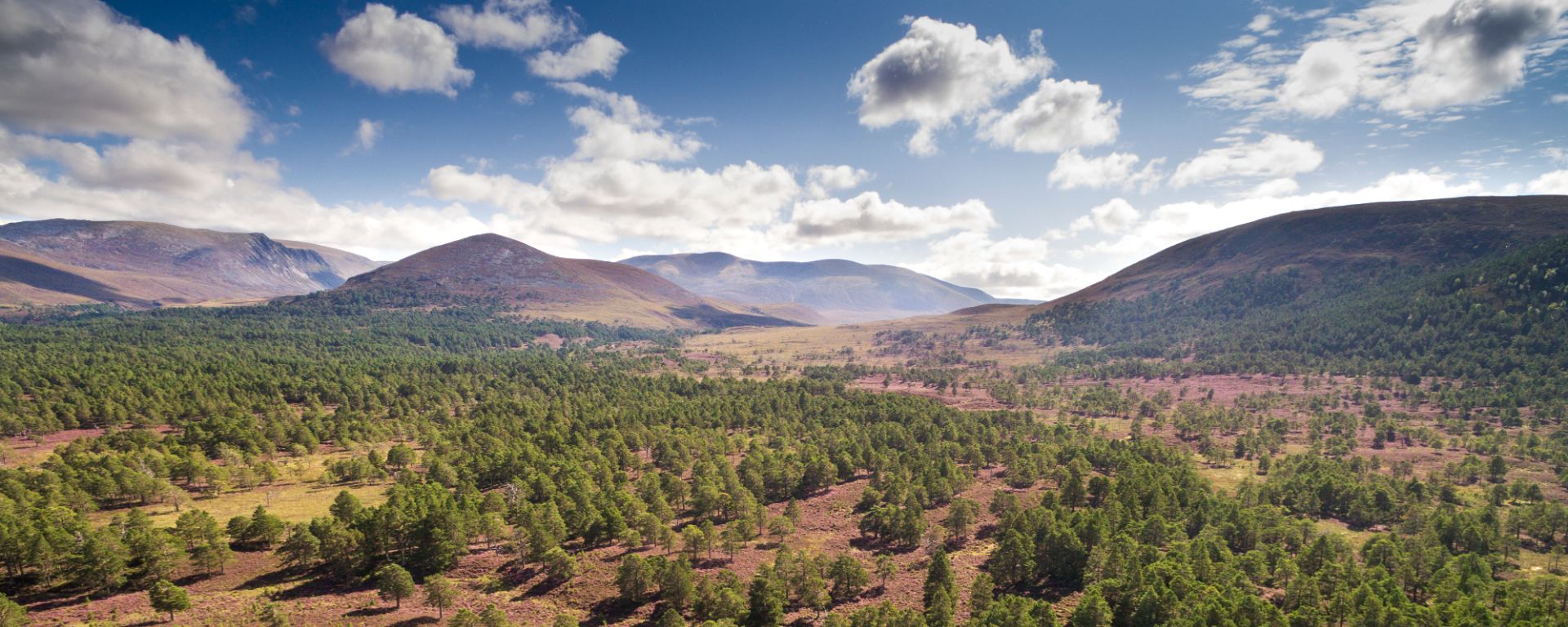In this series, we are promoting knowledge exchange in restoration around the world: from success to failures and anything in between! In this post Taylor Shaw from the Endangered Landscapes and Seascapes Programme shares their experience attending a Knowledge Exchange Visit hosted by Cairngorms Connect in Scotland, where restoration practitioners from across Europe met to discuss how science can support their work.
The knowledge exchange visit brought together projects from 10 countries across the UK and Europe. What all of these projects have in common is that they are funded by the Endangered Landscapes & Seascapes Programme (ELSP), and through this they collect monitoring data across ecological, ecosystem services and socio-economic themes. Although attendees’ landscapes and restoration interventions vary, they share the challenges and opportunities of collecting data across these themes, and of implementing evidence-based restoration at large scales. As such, the purpose of this visit was to provide an opportunity for knowledge exchange between projects, in particular around the topic of conducting science within large-scale ecosystem restoration projects.

The visit was hosted by over 20 Cairngorms Connect staff, who shared their knowledge about the ecological, economic and social considerations regarding the restoration of natural forests, peatlands, rivers and floodplains in Cairngorms National Park. Twenty-two visitors came from projects that are working in Portugal, Turkey, Bulgaria, Georgia, Ukraine, Finland, Austria, Slovenia, Croatia, Hungary, Serbia, as well as other parts of the UK. Visitors brought their experiences from working in grasslands, floodplains, peatlands, temperate and boreal forests, and marine and coastal areas.

The Cairngorms Connect landscape was an excellent location for this event, given their strong emphasis on science and monitoring alongside restoration practice. Their work emphasises restoring not just single sites or habitats, but natural processes at landscape scale, often with before-after control-impact comparisons. We visited restoration sites to see these interventions up close, which stimulated discussions, enabled visitors from other restoration projects to share their knowledge, and to build relationships more generally within the ELSP network.

Among the themes covered on outdoor excursions were restoring deadwood within forests, camera trapping and genetic analyses for understanding predator-prey relationships, peatland restoration at scale, tree cultivation and genetic rescue for mountain woodland restoration, natural forest regeneration by reduction of deer browsing pressure, nature-based enterprises, river re-meandering, and nature-based enterprises to support these activities. Common themes throughout these site visits were the importance of involving local communities in this work, testing alternative management strategies to learn how to restore most effectively, striking the balance between having multiple replicates and working at scale, and how to ensure the longevity of monitoring projects.

We also found time to meet indoors and discuss the ELSP Monitoring Framework, which all the projects use to collect their monitoring data. This framework provides a flexible, yet standardised approach to collecting monitoring data across three key themes relevant to working at such large scales: ecological, ecosystem service and socioeconomic change. Attendees discussed the benefits of using this framework, as well as the challenges and how these could be overcome. Central to the conversations were discussions about how data could continue to be collected long-term (across different funding periods), and how to analyse their data to learn about changes occurring in their land- and seascapes. Attendees also expressed an interest in learning more about the indicators other projects chose and why, demonstrating the value of bringing practitioners together to share project activities.

This knowledge exchange visit was valuable not only because of the relationships and connections that were made during the week, but for the many ideas that arose, upon which we can take action moving forward. The ELSP now has a list of webinar topics about which project staff are particularly interested in learning more. These topics range from human-wildlife coexistence and attitude change towards large carnivores, best practices for implementing experimental designs in restoration landscapes, machine learning approaches to assessing land cover change over time and building effective and lasting partnerships, among others. We look forward to taking these plans forward to ultimately support more effective restoration, both within individual projects and across the Endangered Landscapes & Seascapes Programme.
Discover more posts from our ‘Restoring Landscapes’ blog series here. If you have an idea for a blog that would fit into this series, please contact Catherine Waite.

One thought on “Restoring Landscapes: Knowledge Exchange Visit in the Cairngorms”